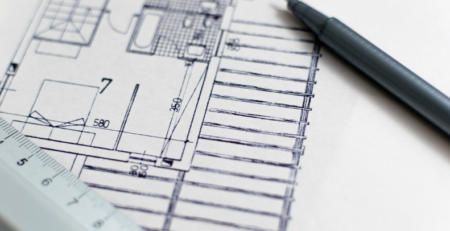From Stone to Steel: A Journey Through the Durability of UK Homes
Our homes are more than just the sum of their bricks and mortar. They’re the stage upon which we live our lives, a tangible piece of our personal history and a reflection of the broader social and cultural context in which they are built. In the UK, a rich tapestry of architectural styles tells a centuries-old tale of adaptation and change, each new chapter adding depth to the narrative. This prompts us to ponder – how long are these homes built to last? And what influences their lifespan?
This isn’t just a question for architects, builders, or policymakers. It’s a concern for homeowners and prospective buyers, housing market investors, and indeed, anyone with an interest in understanding the remarkable durability of UK homes. In this in-depth exploration, we’ll delve into these questions, unravelling the lifespan of different types of UK homes and discovering what makes them stand the test of time.
The Lifespan Debate of UK Homes: A Journey from 60 to 2000 Years
In 1992, a benchmark was set suggesting that new-build properties should have a lifespan of at least 60 years. This was a practical estimate, considering the average human lifespan and the conventional idea of homeownership spanning a lifetime. However, the narrative took a drastic turn when, just 25 years later, the Local Government Association (LGA) suggested that new-build homes should aim to last for 2000 years.
This shift from 60 to 2000 years could be interpreted as a dramatic reflection on the current rate of housebuilding, implying a need to drastically improve our rate of new home construction. Alternatively, it serves as a challenge for modern architecture and construction – an aspiration to create homes that are not just functional and beautiful, but also extremely durable, able to withstand the social, environmental, and technological changes of future millennia.
Breaking Down the House: The Foundations of Durability
While the proposed 2000-year lifespan might seem ambitious, it’s worth noting that many historic homes in the UK have already withstood the test of time. This durability can be attributed to a combination of factors: the quality of materials used, the skill and craftsmanship of builders, the home’s location, and the care and maintenance it receives over the years.
From the stone cottages of the Cotswolds to the brick terraces of Victorian London, traditional UK homes have often been built using locally sourced materials, which not only gives them their distinct character but also contributes to their resilience. These materials, whether it’s Cotswold limestone, Welsh slate or London stock brick, have proven their ability to endure the UK’s diverse weather conditions for centuries.
Craftsmanship, too, plays a critical role in the durability of a home. The techniques used to construct and finish a home, from the stonemasonry of a Georgian manor to the joinery of a Tudor timber-frame, are not only indicative of the era in which the home was built, but also contribute to its longevity.
Perspective of Time: Evolution of UK Home Styles
If you took a walk through the UK’s architectural history, you would see a fascinating evolution of home styles. From the grand homes built during the Tudor dynasty, blending gothic and medieval forms with softer renaissance styles, to the different key types of houses in the UK today, each era has left an indelible mark on the landscape.
The Tudor homes, with their distinctive black-and-white timber frames, steeply pitched roofs and leaded windows, have largely stood the test of time. Some still serve as private residences, while others have been converted into commercial premises or tourist attractions. Similarly, the grand Georgian townhouses, with their symmetrical facades, sash windows and ornate stucco work, continue to dominate the streetscapes of cities like Bath and Edinburgh.

The industrial revolution brought about the Victorian and Edwardian terraces, characterised by their red brick construction, bay windows and decorative ironwork. Many of these homes are still lived in today, offering a testament to their durability and adaptability to modern living requirements.
The Modern Architectural Palette: A Look at Contemporary UK Homes
Modern UK homes are a varied lot, reflecting the diverse needs and preferences of today’s homeowners. Despite their variety, these homes are uniformly geared towards durability, designed and built to last using high-quality materials and innovative construction techniques.
For instance, new-build detached homes are a popular choice for families, offering space, privacy, and the potential for future expansion. They are constructed using a variety of materials, from traditional brick and block to modern timber frames, each chosen for their longevity as well as their aesthetic appeal.
Flats and apartments cater to the growing urban population, often constructed in concrete and steel to maximise durability and minimise maintenance. These structures are designed to withstand not only the elements but also the wear and tear of high-density living.
Meanwhile, converted homes, such as barn conversions or warehouse lofts, offer a unique blend of old and new, combining the character and durability of historic structures with modern conveniences and design aesthetics.
Housing the Future: Trends Shaping the Future of UK Housing
Looking ahead, current forecasts suggest a steady increase in private housing starts through to 2027. This trend indicates a continued focus on creating homes that cater to the evolving needs of homeowners while ensuring longevity. One of the key trends shaping the future of UK housing is the growing emphasis on sustainability. Homebuilders are increasingly incorporating eco-friendly design principles, energy-efficient technologies, and renewable materials into their plans, with a view to reducing the environmental impact of homes and enhancing their long-term viability.
Smart home technology is another significant trend influencing home design and construction. These technologies not only enhance the comfort and convenience of homes but also contribute to their durability by facilitating better home management and maintenance. For instance, smart home systems can detect issues like leaks or electrical faults early, allowing for prompt repairs that prevent further damage.
The changing demographic landscape is also shaping the future of UK homes. As the population ages, there is a growing need for age-friendly homes that can adapt to the changing needs of their inhabitants. This requires a thoughtful approach to design and construction, considering factors like accessibility, safety, and the potential for future adaptation or extension.
Finally, there is a growing recognition of the importance of building homes that can withstand the impacts of climate change. This means not only making homes more energy-efficient but also building them to be more resilient to extreme weather events like floods, heatwaves, or storms.
Maintaining Durability: Role of Home Maintenance and Adaptability
While the quality of construction and materials play a crucial role in determining a home’s lifespan, equally important is the care it receives throughout its life. Regular maintenance and timely repairs are vital to preserving the condition and extending the lifespan of a home.
In the UK, the tradition of home maintenance is deeply ingrained, stemming from a long history of homeownership and a collective appreciation for the value of well-kept homes. This culture of care extends from period properties to new builds, with homeowners investing time and resources in maintaining and improving their homes.
However, durability isn’t just about physical longevity. It’s also about adaptability – the ability of a home to evolve with the times and meet changing needs. The versatility of UK homes, from period conversions to modern open-plan layouts, highlights their inherent adaptability. As needs and lifestyles change, these homes can be adapted and updated, ensuring they continue to provide comfortable, functional living spaces for generations to come.
Sustainable Longevity: Eco-friendly Construction for Long-lasting Homes
With growing awareness of climate change and the environmental impact of buildings, there is an increasing emphasis on creating homes that are not only durable but also sustainable. This involves using renewable or low-impact materials, employing energy-efficient design principles, and incorporating technologies that reduce a home’s carbon footprint.
Eco-friendly construction techniques are becoming more common, from passive house designs that maximise energy efficiency to the use of sustainable materials like timber or hempcrete. These homes are not just built to last but are also designed to have a minimal environmental impact over their lifespan. As such, they represent the next frontier in the evolution of durable UK homes.
The Role of Policy and Regulation in Ensuring Durable Homes
While the longevity of a home is influenced by factors like design, materials, and maintenance, it’s also shaped by the broader policy and regulatory environment. In the UK, policies and regulations around housing construction play a critical role in ensuring that homes are built to high standards of safety, efficiency, and durability.
This includes building regulations that specify the minimum standards for construction and renovation, planning policies that guide the location and design of new homes, and housing standards that set out requirements for things like energy efficiency, accessibility, and space standards. For example, the UK’s Building Regulations 2010 covers everything from structural integrity and fire safety to energy performance, while the Housing Health and Safety Rating System is used to identify potential risks and hazards in homes.
Policy also plays a role in encouraging or incentivising certain types of development or construction techniques. For example, policies that promote energy efficiency or the use of sustainable materials can influence the durability of homes by encouraging the use of long-lasting, low-impact materials and design approaches.
Looking ahead, it’s likely that policy and regulation will continue to play a crucial role in shaping the lifespan of UK homes. As we face challenges like climate change, housing shortages, and changing demographics, the need for durable, adaptable, and sustainable homes will become increasingly important, and policy and regulation will be key tools in achieving these objectives.
Conclusion: Building Homes, Crafting Legacies
The durability of UK homes is a testament to the skill and craftsmanship of generations of builders, the quality of the materials used, and the care and attention invested by homeowners over the years. These homes are not just structures; they are a part of the UK’s cultural and architectural heritage, contributing to the character and identity of cities, towns, and villages across the country.
However, durability is not just about the past. It’s also about the future. As we look to the future of UK housing, the challenge is not just to create homes that will stand the test of time but also to ensure that these homes are sustainable, adaptable, and suited to the changing needs of their inhabitants.
The journey from a 60-year lifespan to a proposed 2000 years is not just about building better homes; it’s about rethinking our approach to housing. It’s about recognising that our homes are a legacy we leave for future generations and ensuring that this legacy is one of quality, sustainability, and enduring value. In the face of this challenge, the UK’s tradition of durable homes serves as both an inspiration and a solid foundation upon which to build.
As we step into a future where the concept of a ‘forever home’ might extend well beyond our lifetimes, there’s no better time to appreciate the past and reimagine the future of UK housing – one brick, one home, one community at a time. After all, in the words of Winston Churchill, “We shape our buildings; thereafter they shape us.”
ARE YOU READY TO START INVESTING?
Subscribe to our mailing list now for exclusive deals, investment guides and the latest information from the property market.






